Northeastern Minnesota Nomenclature: How Duluth-area cities, townships, lakes and rivers were named
One hundred years ago, the Minnesota Historical Society published a 735-page book by Warren Upham outlining the history behind the names of Minnesota municipalities and bodies of water.
Minnesota Geographic Names: Their Origin and Historic Significance, originally released in 1920, can be paged through on the society’s website. (The section on St. Louis County begins on page 476.) Expanded and updated versions of the book were published in 1969 and 2001.
The Duluth Herald published a story about the release of the book, with abridged information on St. Louis, Carlton, Cook and Itasca counties. The text of that story appears below.
How names of places in this and neighboring counties were chosen
Duluth Herald, June 12, 1920
Do you know where the place you live in got its name?
If you don’t, and live in Minnesota, the Minnesota Historical society can probably furnish you with the information.
“Minnesota Geographic Names” is the title of Volume XVII of the Minnesota Historical society collections, which is just off the press, and it contains a wealth of data concerning the origin and significance of the nomenclature of almost every hamlet, lake and stream in the state. The book was compiled by Warren Upham of St. Paul.
The first chapter of the book treats of general features, as districts bearing topographical names, the state name of sobriquets and the larger lakes and rivers. Eighty-six chapters treat the place names of the counties in alphabetical order. Then the township and villages are listed in alphabetical series.
Derivation of Names
Minnesota received her name from the Minnesota river. The Dakota and Sioux name Minnesota means “sky-tinted water” (minne, water, and sota, somewhat clouded).
The nomenclature of the iron ranges, Vermilion, Mesaba and Cuyuna, is also explained. The first was named after Vermilion lake, the second has an Ojibway name, spelled “Missabay Heights” by Nicollet, translated as Giant mountain by Gilfillan. The third was named by his discoverer, Cuyler Adams, from his own name and from his dog, Una, who accompanied him on many prospecting trips.
St. Louis county was named from the St. Louis river, which, in turn, was named in honor of St. Louis, King Louis IX of France (1215 to 1270).
Here are the origins of some of the place names in St. Louis County:
Adolph. Personal name derived from the German language, meaning “noble wolf” or “noble hero.”
Alango. Name comes from FInland.
Alborn. Named by its Norwegian settlers. Railway station here originally called Albert, for Albert S. Chase, brother of Kelsey D. Chase, president of the Duluth, Missabe & Northern Railway company, 1890-1893.
Allen township. Named for William Prescott Allen, lumberman, who died in Portland, Me., in August, 1908. Allen resided in Cloquet several years and was former state senator.
Bassett township. Named for William Bassett, a cruiser.
Beatty township. Honors five brothers, pioneers there.
Birch. Named for Charles J. Birch, Proctor, trainmaster for Duluth, Missabe & Northern.
Biwabik. Has an Ojibway name, meaning iron.
Breitung township. Named for Edward Breitung, Negaunee, Mich., who opened the first mine worked on the Vermilion range. He was in congress 1883-5.
Brimson. Station of the Duluth & Iron Range named in honor of W. H. Brimson, superintendent of the road in 1888-9.
Buhl. Named for Frank H. Buhl, Sharon, Pa.
Burnett. Station on the Duluth, Missabe & Northern in Industrial township, named for a roadmaster of this road.
Buyck. Named for one of its pioneers, Charles Buyck, who later removed to Canada.
Canosia township. Named for Canosia lake, better known as Pike lake or “lake of the pickerel.”
Chisholm. Named for A. M. Chisholm, Duluth, one of the principal explorers of the Mesaba range.
Clifton. First village platted in St. Louis County. This was 1855. Clifton existed only on paper.
Clinton township. Named for the late Clinton Markell, Duluth.
Cook. Named for Wirt H. Cook, Duluth lumber dealer.
Cotton township. Named for J. B. Cotton, Duluth lawyer.
Culver township. Named for J. B. Culver, Duluth’s first mayor and pioneer settler.
Duluth. Named for the French trader and missionary, Daniel Greysolon Du Luth.
Ely. Named in honor of Arthur Ely, Cleveland, Ohio, one of the financial backers of the Duluth & Iron Range road in its early days and prominent in the development of the mines at Tower.
Embarrass township. Received name from Embarrass river, referring to driftwood formerly on the stream which was a difficulty to canoes.
Endion townsite. This townsite, now a part of Duluth, was named with an Ojibway word meaning “my, your, or his home.”
Eveleth. Named after a woodsman named Eveleth who was sent to Minnesota from Michigan to pick up pine lands.
Fond du Lac. Bears a French name signifying “farther end of the lake,” or “head of the lake.”
Gheen. Named for Rear Admiral Edward Hickman Gheen.
Gilbert. Named for E. A. Gilbert, Duluth.
Gnesen township. Named by Polish settlers for a city in Posen, Prussia, reputed to be the oldest of Polish cities.
Great Scott township. Named by county board, this being a common expletive of one of the board’s members.
Halden. Named for Odin Halden, Duluth, former county auditor.
Herman township. Named for an early German hero, renowned for defeating troops in German about 20 A.D.
Hibbing. Named for Frank Hibbing, its founder. He died at his home in Duluth in 1897.
Hornby. Named for H. C. Hornby of Cloquet.
Kelsey. Named for Kelsey D. Chase of Faribault.
Kinney. Named in honor of O. D. Kinney, founder of Virginia.
McKinley. Village named for the McKinley brothers, John, William and Duncan, who first settled on the Mesaba range in 1890.
Maney. Named for E. J. Maney, Station in Alborn township.
Merritt. Mining townsite named for Alfred and Leonidas Merritt of Duluth.
Mitchell. Station two miles east of Hibbing named for Pentecost Mitchell, Duluth, vice president of the Oliver Iron Mining company.
Morse township. Named in honor of J. C. Morse, Chicago, one of the members of the Minnesota Iron Company.
Munger. Village in Solway township named for the late Roger S. Munger of Duluth.
New Independence township. Named by its settlers who came mostly from Norway when that country and Sweden had the same sovereign.
Normanna township. Named in compliment for immigrants from Norway.
Owens township. Named for John L., Samuel H. and Thomas Owens, pioneer settlers.
Proctor Knott. Named for the late Proctor Knott of Kentucky, who made a speech in congress in 1871 ridiculing Duluth but really aiding the young city much in advertisement.
Rice’s Point. A district in Duluth named for Orrin W. Rice, Superior, pioneer land holder here.
Skibo. Station on Duluth & Iron Range named for Skibo Castle, summer home of Andrew Carnegie in the northern part of Scotland.
Solway township. Named for the Solway Firth, an inlet of the Irish sea between Scotland and England.
Soudan. So named because the severe winter cold here is very strongly contrasted with the tropical heat of the Soudan region of Africa.
Stuntz township. Named in honor of George R. Stuntz, Duluth pioneer.
Tower. Named in honor of Charlemagne Tower, Sr., of Philadelphia.
Vermilion Lake township. Named from the lake, which has the same significance as the Ojibway name for Red lake.
Virginia. Name proposed by lumbermen from the state of Virginia living in Duluth.
Winton. Named in honor of William C. Winton, Duluth, who did much logging in that vicinity.
Lakes and streams in St. Louis county have also an interesting nomenclature. Among those noted are:
Talmadge river. Named for Josiah Talmadge, a north shore pioneer at Clifton in 1856.
Mission creek. This stream flows into the St. Louis river at Fond du Lac and was named from the early mission there for the Ojibways.
Miller creek. Was named for Robert P. Miller, who enlisted from Duluth in the Fourth Minnesota regiment of December, 1851, and was promoted to first lieutenant, Fiftieth U. S. Colored infantry in 1863.
Kingsbury creek. Named for William Wallace Kingsbury, Towanda, Pa., who settled here in the early days and was a delegate to the state constitutional convention.
Carlton County Names.
Carlton county was named in honor of Rueben B. Carlton, one of the first settlers at Fond du Lac and one of the proprietors of the townsite of Fond du Lac. He came there in 1847 as a farmer and a blacksmith for the Ojibway Indians. The village of Carlton was also named for him. The origin and significance of some other local names in this county are:
Barnum. Named for George G. Barnum, Duluth.
Cloquet. Named for the Cloquet river.
Thomson township. Named in honor of David Thomson, Canadian explorer and geographer. Generally spelled as if for James Thomson (1700-1748) Scottish poet.
Cook County.
Cook county was named in honor of Maj. Michael Cook of Faribault, prominent citizen who was mortally wounded as a soldier in the Civil war. It was thought by some that the name adopted by the legislature for this county was in commemoration of John Cook, who was killed by the Ojibways in 1872 at Audubon, Minn., but Col. C. H. Graves, the state senator from Duluth, who introduced the bill, states that the name was selected to honor Maj. Cook.
Lutsen township in Cook county was named by its most prominent citizen, Carl A. A. Nelson, for a town in Prussian Saxony.
Cross river at Schroeder was so called by Thomas Clark, assistant state geologist in 1854. The origin of this name was from a cross of wood erected by Father Baraga, who landed there in 1845-6.
The same geologist explains the name of Temperance river in this county. Most of the streams, he points out, have a bar of sand at their mouths, but Temperance river has no bar.
Itasca County.
Itasca county received its name from Itasca lake. The lake in turn was named from the Latin “Veritas,” meaning truth, and “Caput,” meaning head. The first three and last three letters of these two words were struck off and this left Itasca.
Coleraine, in this county, was named in honor of Thomas F. Cole of New York, formerly of Duluth, who was prominent in the early development of mines in this country.
Lake county was named for Lake Superior, which the Ojibways called “Kitcigumi, meaning great-water.”
Recommended Links:
Leave a Comment
Only registered members can post a comment , Login / Register Here


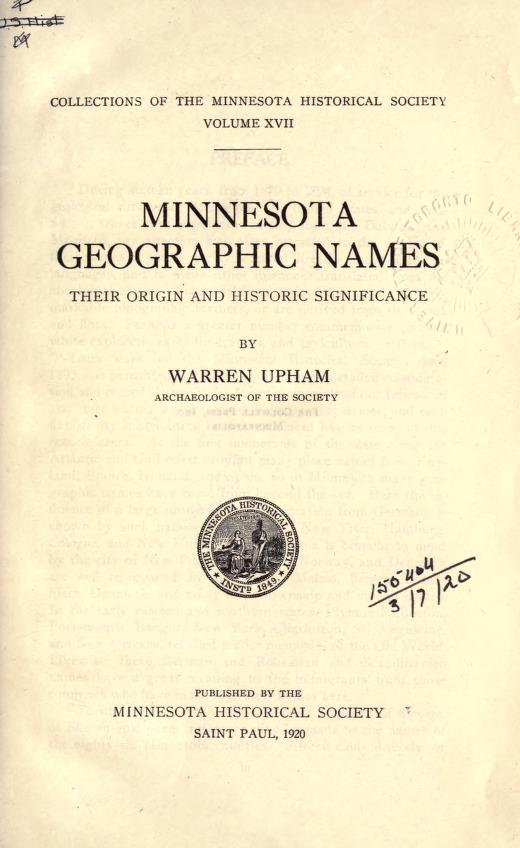
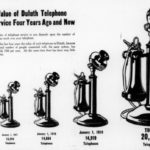
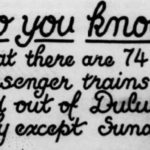
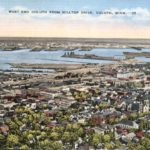
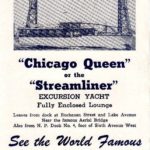








1 Comment
Mike Creger
about 4 years ago